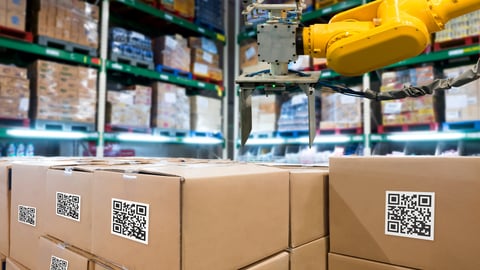
Retail teams are running at full speed — balancing in-store service, online fulfillment, and fast-changing customer expectations. And they’re doing it well.
But even the most capable retail teams are feeling the strain as operations grow more complex and staffing remains inconsistent. Retailers aren’t looking to overhaul what’s working — they’re looking for ways to amplify it.
This is where automation fits in: helping store teams stay efficient, visible, and focused on delivering a standout customer experience. The goal isn’t to disrupt. It’s to support what’s already effective and make it easier to scale.
From strong foundations to smarter operations
Today’s retailers are already managing a lot: replenishing shelves, handling curbside pickups, executing BOPIS, and creating an engaging in-store experience. But as demands increase and staffing remains a challenge, it becomes harder to keep up without trade-offs.
Many of the systems still in place weren’t designed for the level of complexity modern retail now requires. Processes that once worked — like manual inventory checks or overnight audits — can now introduce bottlenecks and blind spots. When insights are delayed, even strong teams can’t respond as quickly or as accurately as they’d like.
Automation helps turn good operations into great ones — by simplifying the backend so store teams can stay focused on the floor, not buried in tasks. It enables teams to move with clarity, using real-time data to make confident, fast decisions that impact the entire store experience. Autonomous Mobile Robots (AMRs) are already transforming how big-box and small-format retailers operate—empowering teams, streamlining operations, and bringing the focus back to what matters most: the customer.
Empowering teams to focus where it counts
AMRs are already supporting retailers across formats. By taking on routine work like inventory scanning and inventory data capture, they allow teams to prioritize more impactful tasks.
This kind of support can be a game-changer for store managers and associates who wear multiple hats. Rather than spending valuable hours walking aisles, they can focus on responding to customer needs and keeping the store running smoothly.
According to Morgan Stanley, up to 70% of retail’s routine tasks could be automated by 2025. That’s not a signal to replace workers—it’s a chance to relieve pressure and refocus efforts where human judgment, creativity, and care are truly needed.
Better data, better decisions
Inventory visibility is key — but when the data is outdated or inaccurate, it leads to missteps that cost time and sales.
AMRs use computer vision, RFID and AI to collect consistent, real-time shelf data. With a clear picture of what’s happening on the floor, teams can respond quickly, restock more effectively, and stay aligned with shopper demand. They no longer have to guess whether a product is out of stock or in the wrong location or if a price tag has not been updated to reflect a promotion.
This kind of accuracy becomes especially valuable during peak seasons or promotional events, when small errors can lead to missed sales or frustrated customers. And for regional managers or central operations teams, access to timely, store-level data makes it easier to identify trends, support staff, and plan with precision.
Better visibility leads to better decisions — from daily inventory actions to long-term strategy.
Creating space for human impact
Retail thrives on the human connection — helping customers, solving problems, and creating a great experience. That’s hard to maintain when employees are stuck with repetitive back-room tasks.
AMRs take on the kinds of jobs that don’t require human intuition — like aisle scanning or stock counting—so people can focus on conversations, service, and leadership. These are resources that give your staff the bandwidth to show up as the best version of themselves.
When team members are empowered to step out of the back room and onto the floor, they build stronger relationships with customers, collaborate better with colleagues, and take more ownership over the store’s success. That’s what drives loyalty, not only from shoppers — but from employees, too.
Built for what retail demands now
Today’s pace of retail requires more than manual checklists and legacy tools. Stores need accurate insights, seamless workflows, and the ability to adapt fast.
Automation supports that shift by reducing friction and enabling smarter decisions across every department. It helps create a more consistent, high-performing operation — without requiring massive overhauls or added pressure on staff. It’s about making the day-to-day easier, more manageable, and more rewarding for everyone involved.
You’ve already built something great. Now it’s about unlocking even more value from it—with tools that keep your team energized, your shelves optimized, and your customers coming back.
Gavin Donley is head of marketing at Brain Corp.
https://chainstoreage.com/how-top-retail-teams-are-using-automation

